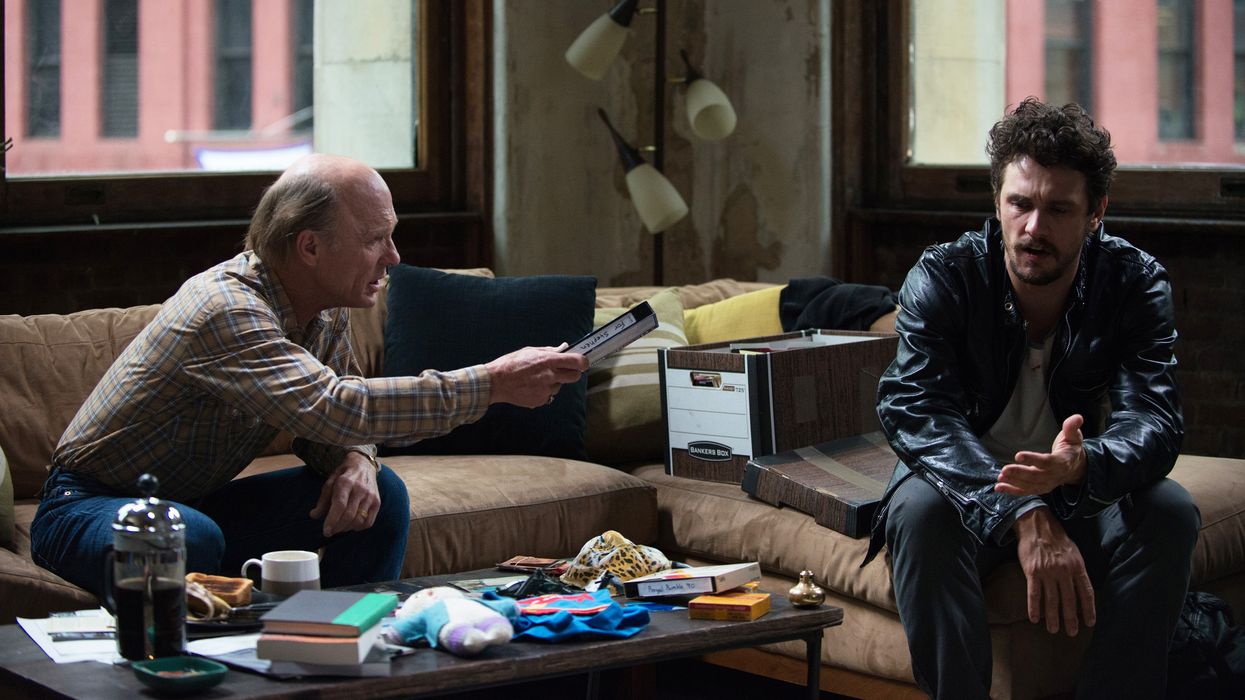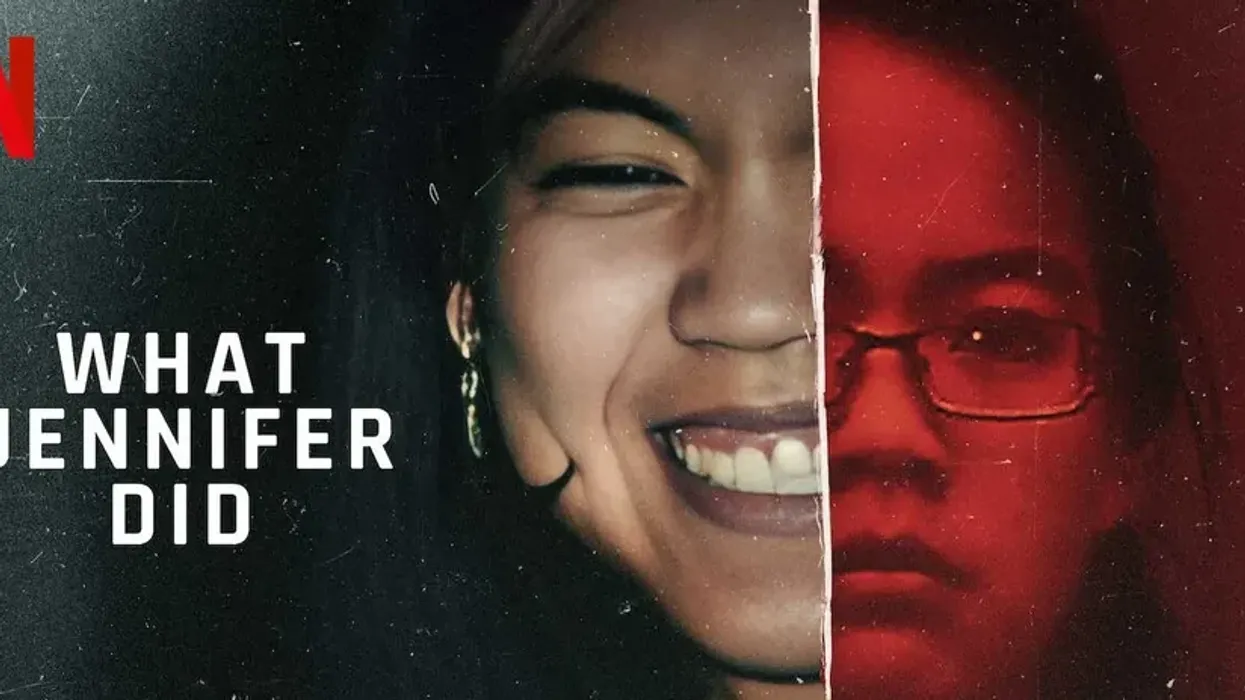Innovating on the Flashback Device in True-Crime Thriller 'The Adderall Diaries'
We've all watched films that use flashbacks to show something being remembered by a character. (Many of us have probably made a film with a flashback or two.) But do flashbacks on screen actually feel like a memory?

Pamela Romanowsky set out to redefine the flashback and make it more authentic to the malleable experience of human memory in the Tribeca 2015 film The Adderall Diaries. She sat down with No Film School to talk about adapting the film from the true-life memoir text, playing with the flashback, and production on her first feature.
NFS: What appealed to you about the book The Adderall Diaries, and what made you want to adapt it for the screen?

Pamela Romanowsky: What appealed to me most about the book is that it's about a lot of things. I think in adapting it, different people would approach it really different ways. To me, the heart of the story is about memory and how we use it to define ourselves, and not the stories. The way we tell our story says a lot about how we see ourselves in relationship to the world.
I was a psych major in college so it's something like behavior, motivation, self-destruction, and everything that I studied in a really academic way. One thing I love about the book is that it allowed me to talk about some of these really heavy concepts in a way that was very human and emotional. In the process of adapting it, I kept trying to figure out what the heart of the story was to me and how best to tell that.
NFS: How close did you stay to the text of the book? What was your process to adapt it?
Romanowsky: First, this is my first feature, so I’m figuring out the process as I go. Secondly, I had a pretty long time to work on it. We shot this movie about a year ago and so the first draft of the script was like three years ago. I had two years to develop the script, and a huge part of that was working at the Sundance labs. I did the Screenwriters lab and the Directors lab, and all the labs they would let me do. That's an invaluable experience. I feel really lucky to have gotten to do it. So much of that process is about finding yourself in the story, putting yourself in the story, being willing to be vulnerable in that way.
It's really interesting when you're working on an adaptation, because the story isn't my life. These characters aren't me. But it was really important to me to be able to see myself in each of them, and to understand them as complete human beings. So much of the story and the film is about how a victim in one person's story is a villain in the other's story. That person wouldn't necessarily tell the story in the same way, or cast themselves in the same role. It was really important to me to figure out how to make each of these characters feel complete.
The desire to experiment with something that felt a little bit more like how memory feels, how it sort of rushes in whether you want it to or not, how you see fragments of it...that's all stuff that I was trying explore...
NFS: A lot of the story is about the concept of memory and how it's malleable. In film, theorists talk about how close film is to the thought process. Was that something you had in mind when deciding the strategies you wanted to use to get this across to the audience?
Romanowsky: Memory in cinema is just totally fascinating to me. It's hard to know how memory feels for any other person. You only know for yourself. But in my experience, when you're watching a movie and you see a flashback with a card telling you what year it is, or some period music to tell you when it is, and it's shot very objectively, that's not at all how memory feels. The desire to experiment with something that felt a little bit more like how memory feels, how it sort of rushes in whether you want it to or not, how you see fragments of it, how the pacing of that event feels different when you're remembering it...that's all stuff that I was trying explore with my DP and with my editor. We experimented a lot.
Within the flashbacks in this film, sometimes you see one piece of it, and then will see another piece of it later that lends context. Sometimes it's the same content but it's a little bit different. Like the actors clothes change a little bit between those two versions of the flashback. The backgrounds change a little bit. The way that we shoot it changed. Then, some factual differences happen. There's a scene where the teenagers smash the dad's Mustang on the sidewalk, and you see that in two very different ways. One of them is shot in real time, one of them is shot in slow motion. The blocking is different. The content of the scene is little bit different.
The flashbacks happened very quickly and we knew that in the edit I would only want to see pieces of it. But we shot those scenes as a whole scene. There's a beginning, an end, and a middle; if you wanted to cut it in a really traditional way, you could.
NFS: Were those experimentations all channeled-in before you started shooting, or did any of that happen during the editing process?
Romanowsky: A lot of it was thought out in advance, but we shot a lot of footage. The flashbacks happened very quickly and we knew that in the edit I would only want to see pieces of it. But we shot those scenes as a whole scene. There's a beginning, an end, and a middle; if you wanted to cut it in a really traditional way, you could. We did a lot of different kinds of coverage knowing that we have the scene objectively, should that ever be useful. Then, we have the freedom to change the shooting strategy on set. In general, the way that my DP Bruce Thierry Cheung and I work together is that we have a shot list, but it doesn't ever really work exactly the way you think it will because the set is different or you change the blocking or something.
We really never had storyboards. I would rehearse the scene and block it, and once we figured out how to shoot it, we would plan our master shot. We used steadicam every day. We used two cameras every day off. We'd do a long floating master, and then would match the other side of it. That way you keep in mind what that camera path was. We'd do these two intertwining masters and then think about, what are we not seeing very clearly? There's this part of this scene and so we'd cover that. It was really just like a system of prioritizing and figuring out what from the scene was not clear yet.
For myself, I just don't really like dolly shots. They feel sort of like objective, like you can feel the apparatus or something. It just doesn't feel super organic, and I really like films where the visual style comes from the main character or characters, so it matches their psychological state.
NFS: Speaking of this process of working with your DP Bruce, was there a specific set of tools that you guys decided to go with to achieve what you needed to in this film?
Romanowsky: We shot on the Red for a couple reasons. One is you can shoot in 5K which allows you to reframe the shot if you want to. There aren't very many times we did that, but occasionally. It also allows you to shoot really slow motion. That's why we picked that camera over the ALEXA — just for the ability to shoot very slow. Bruce wanted a specific lens on the flashbacks, Super Baltar lenses. They're old and imperfect, and they just look slightly different than what we shot the present tense stuff with. In the color correct, I spent a lot of time picking the right grain, and I think ultimately I ended up picking a stock that we both shot on a lot in film school. It's like a 16mm Kodak stock and we were both like, "Yes! That's the one!" Because it looks really familiar. Steadicam was a really a big part of the film. I think that's an incredible tool. It's just one of my favorites. For myself, I just don't really like dolly shots. They feel sort of like objective, like you can feel the apparatus or something. It just doesn't feel super organic, and I really like films where the visual style comes from the main character or characters, so it matches their psychological state.
NFS: What would you say would be one of the biggest obstacles getting the film completed?
Romanowsky: I think for me the hardest part is the rewrites that happen both in the writing and then in the re-cutting. Writing and editing are both really challenging because it's hard to keep objectivity. You can get a little lost in it, and also it just takes so many drafts. I wrote probably a hundred drafts of the script, dozens at least. And we had a ton of cuts. Something that has this kind of non-linear structure to it, is a whole lot of trial and error. Showing it to people I trusted, showing it to strangers, getting reactions, was a way to see what resonated and what worked.
NFS: Having just premiered your first film, what would be your advice for other filmmakers earlier in the stages in their careers?
Romanowsky: I think my most important advice is to find your people and to hang on to them. Foster those relationships when you do, because filmmaking is a team sport and it takes so many people to make a film. When you find someone who has your back, who you connect with, who's one of your collaborators, that's a great sense of momentum and connection. So I think it's really important to find and treasure those relationships.
***
Thank you, Pamela!
Have you experimented with conveying the feeling of memory in your films? Have you seen films where's its been done in an interesting way?








![Ethos, Pathos, Logos: 20 Effective Ways to Advertise [Infographic]](https://nofilmschool.com/media-library/ethos-pathos-logos-20-effective-ways-to-advertise-infographic.jpg?id=34064614&width=600&height=600&quality=90&coordinates=560%2C0%2C0%2C0)



